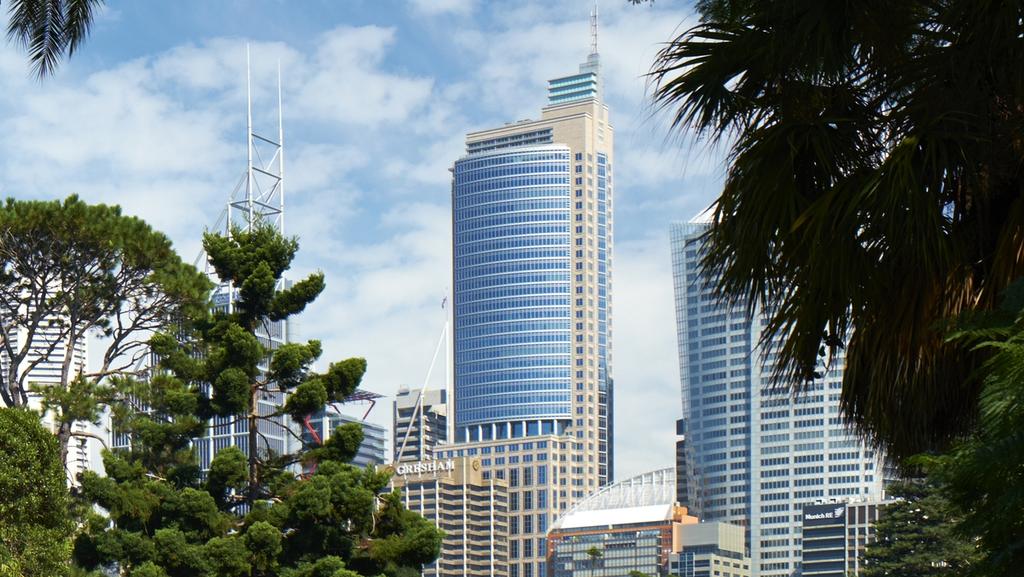Commercial property investment future bright amid global uncertainty

Office has underpinned foreign investment. Picture: iStock
The stability and strong fundamentals of Australia’s commercial property sector are expected to translate to continued foreign investment as a challenging economic period emerges.
While market commentators debate the chance of Australia falling into a recession following the fastest rise in interest rates in a generation, international institutions and investment funds have continued to turn to Australia as a safe haven for capital.
Data released by Treasury last week shows the value of approved investment proposals totalled $19.3bn in the December quarter, an increase of $4.1bn on the prior period. At the current rate, foreign spend this financial year is set to outpace the previous year.
Over the past decade, offshore investors have accounted for about one-third of all buyers of commercial real estate across office, retail and industrial, according to JLL. Foreign investment share of total activity decreased from 32 per cent in 2021 to 26 per cent in 2022, but halved in value terms as a result of lower overall transaction activity.
JLL’s head of capital markets, Australia, Fergal Harris, says global investors were comfortable playing in the Australian market.
“We’re seeing very strong engagement from offshore capital building a case for investment, and we think that story will accelerate in the second half of 2023 when there is more clarity on where debt costs and valuations are likely to stabilise,” Mr Harris said.
“While both factors are taking a little longer than anticipated, we’re starting to see more opportunities arise as assets are brought to the market, mostly in the office market.”
Mr Harris said the capital was “fairly diverse” in terms of the source of origin. “It’s coming from all regions, seeking core-plus and value-add strategies. While there is still some caution, especially towards assets of scale, we think that hesitancy will begin to recede over the next six months,” he said.
Colliers managing director of valuation and advisory services, Dwight Hillier, said instability across European and American markets had seen investors shift to the Asia-Pacific and more specifically Australia, with commercial property becoming the number one target.
The “trophy” office markets of Sydney and Melbourne had underpinned recent performance, said Ray White’s head of commercial research. Vanessa Rader.
“During that Covid period and the last two years have been really, really strong. A lot of that had to do with a number of very large office building transactions,” Ms Rader said.
“What’s interesting is a large number of office transactions occurred during a time when the office market didn’t appear to be doing that well because we had a whole lot of concern in regard to occupancy and vacancy rates. Industrial was also really strong. However, we’ve seen that come back a little bit, and it probably will come back going forward.”

The stability and strong fundamentals of Australia’s commercial property sector will likely translate to continued foreign investment. Picture: iStock
Ms Rader believes the international investment will continue to be strong, but potentially not at the same levels as previous years. “We don’t have the massive supply fluctuations we do in other places,” she said.
The federal reporting showed the US and Canada had the highest levels of investment across all industries over the financial year to date, at $28.2bn and $10.5bn respectively.
In the commercial sector, Centuria’s head of funds management, Ross Lees, has observed the Asian market, in particular Singapore, Korea and Japan, as the biggest driver of investment this year.
“Cross-border interest has remained resilient – even in 2020-21, when our borders were shut, offshore investors comprised the majority of transactions,” Mr Lees said.
“These institutional investors take a long-term view and understand the relative attractiveness of the Australian commercial property market, which continues to be very attractive within the Southeast Asian landscape due to our political stability, market transparency, freehold investment structure and higher relative investment returns than other available investment locations.”
Residential property was most popular with Chinese buyers.
Offshore groups also remained active last year in the industrial sector, Mr Hillier said.
“However, offshore groups often provided capital via local managers throughout the year and included Grosvenor as part of Gateway Capital, BlackRock via Wentworth Capital, Washington State Investment Board via Pittwater Industrial, and Warburg Pincus via Hale,” he said.
Hotel sector investment from offshore has surpassed the pre-pandemic average, particularly from Singapore.
“I expect that we’ll see hotel investment increase just because they are assets that they like. Also, the strong levels of tourism which are anticipated in Australia makes it a very viable investment,” Ms Rader said.
Mr Hillier expects retail will be a major target for global retailers amid market fluctuations, demonstrated by the level of foreign investment that occurred after the Reserve Bank began to raise interest rate rises through the back half of last year. Colliers estimates 60 per cent of overall foreign investment into the asset class, about $1.2bn, took place during this period.
Ms Rader said alternate assets, including build-to-rent and student accommodation, would attract a larger portion of foreign investors moving forward.







